Freewing 70mm Yak-130 EDF Jet
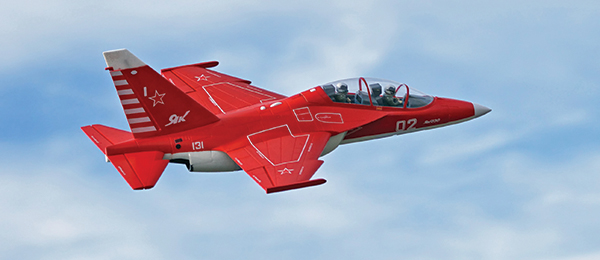
Written by Jon Barnes An affordable and enjoyable EDF jet Abridged product review Photos by the author Read the full product review in the April 2016 issue of Model Aviation.
Specifications
Model type: PNP EDF jet Skill level: Intermediate Wingspan: 36.2 inches Length: 41.3 inches Weight: 61 ounces Power system: Freewing 70mm six-blade EDF Needed to complete: Six-plus channel radio and receiver; 6S 22.2-volt 3,000 to 4,000 mAh LiPo battery pack Construction: EPO foam Street price: $229.99Test-model Details:
Motor used: Freewing 2849/2200 Kv brushless outrunner (installed) Speed controller: Freewing 60-amp with BEC (installed) Battery: Admiral Pro 6S 22.2-volt 60C 4,000 mAh LiPo Radio system: Spektrum DX9 transmitter; Spektrum AR7010 receiver Ready-to-fly weight: 68 ounces Flight duration: 4 to 7 minutesPluses
• Brightly colored red and white airframe offers excellent in-flight visibility. • Electric servoless tricycle retracts with 3mm diameter, spring-loaded struts are durable and make for easy ground handling. • High-performance 70mm EDF power system propels the Yak to speeds of up to 90 mph. • Included flaps allow the Yak to take off and land on shorter runways and at reduced speeds. • Option to build and fly as a lighter, gearless, 4S-powered hand-launched model.Minus
• Slight gap between the wing and fuselage.Abridged product review
The Yakovlev Yak-130 is a seldom-modeled Russian trainer/light-attack aircraft. Manufactured by Freewing, the 70mm Yak-130 is available from Motion RC in both Plug-and-Play (PNP) and ARF Plus versions. The former requires only an appropriately sized battery and radio system. The latter does not include the Freewing 70mm EDF power system, allowing a pilot to use the EDF power system of his or her choice. Both versions include a full array of 9-gram metal gear servos, a set of tricycle-configuration electric retracts with 3mm steel wire struts and metal trunnions, and flaps. Both kits require a minimum six-channel radio system. The PNP version reviewed in this article is Freewing’s upgraded (read as higher thrust and performance) Yak-130. This upgraded kit comes equipped with a brushless outrunner-powered 70mm EDF unit and requires a 6S 22.2-volt 3,000 to 4,000 mAh LiPo battery. The increasing popularity of higher-blade-count impellers had me expecting an impeller with 10 or 12 blades, but the fan included with this kit uses a six-blade impeller. The Yak-130 features a nicely detailed cockpit that includes a pair of helmeted jet fighter pilot busts! The airframe is finished in a brilliantly colored Ferrari red and white scheme that promises to offer excellent in-flight orientation feedback.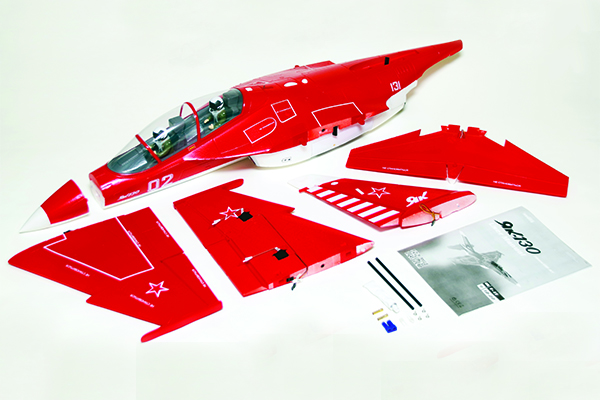
This kit, with its low parts count, assembles in a jiffy and features a nice level of scalelike detail.
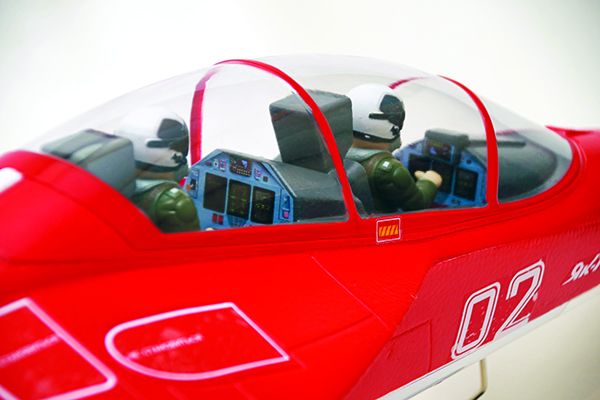
The removable cockpit canopy hatch even includes instrumentation graphics and a pair of pilot busts!
The included tricycle electric retracts are equipped with sturdy metal struts. The Yak-130 fuselage features extended wing roots and wide-set engine intakes. I was glad to find that this model was designed to fly without the need for cheater holes.
Flying
The assembly manual specifically recommends using a six-cell 3,300 mAh LiPo battery with this EDF jet. Like most modelers on a budget, I check my current battery inventory to see if I already have a suitable one on hand. Although I did not have a 6S 3,300 mAh pack, I had a fresh 6S 4,000 mAh Admiral Pro. Unlike some of the larger EDF jet models I have seen, the Yak’s landing gear does not utilize shock-absorbing struts. It instead uses the simpler, less expensive, and lower net parts method known as coiled steel struts on the main gear. The nose gear uses an even simpler, non-suspension-equipped strut. Through a no-frills approach, I found the steering and tracking response of the Yak when on the ground to be tight and true. With the Yak’s long nose pointed into the wind and the flaps dropped to the takeoff position, I slowly rolled into the throttle and brought the 70mm fan to life. The Freewing 70mm six-blade impeller sounds sensational in the air. Although it might not have the sound of the higher-blade-count fans, it doesn’t lack in performance. The bright red and white airframe offers excellent in-flight orientation cues. After a few minutes of rolling and ripping across the skies, it was time to transition the Yak into the landing pattern.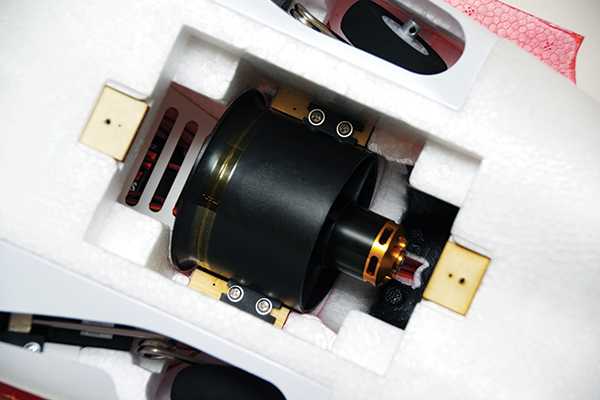
The six-blade Freewing 70mm EDF power system sounds nice and smooth and provides flight durations of 4 to 7 minutes on a 6S 4,000 mAh LiPo battery pack.
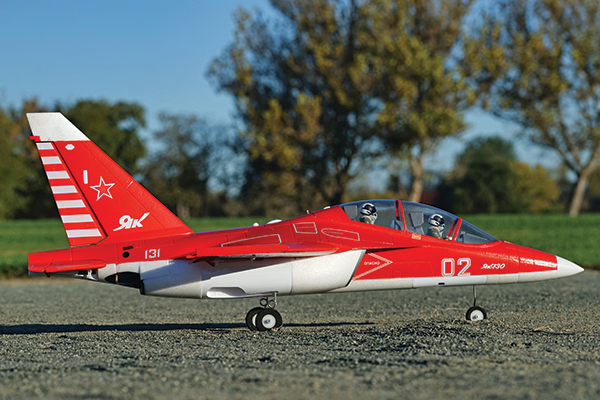
The included retractable tricycle gear is electric. Flaps are included out of the box and using them decreases the amount of runway required to fly the Yak.
The Yak looked like a bucking bronco on its first landing. I theorize that the short coupled airframe and carrying too much airspeed on final approach might have been contributing factors. The Yak’s high-speed performance was satisfying and stable. I observed a slight tail waggle at times, possibly because of the tall vertical stabilizer and rudder assembly being pushed around on windier days. The Yak’s airframe is slightly chubbier than most, and the associated drag ultimately limits it when it comes to all-out speed.










Add new comment